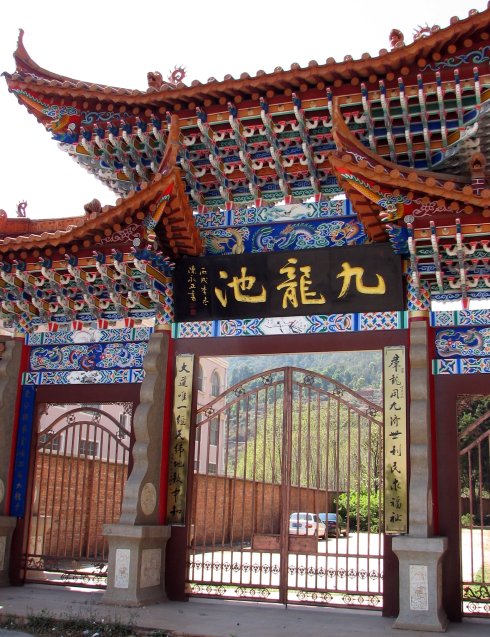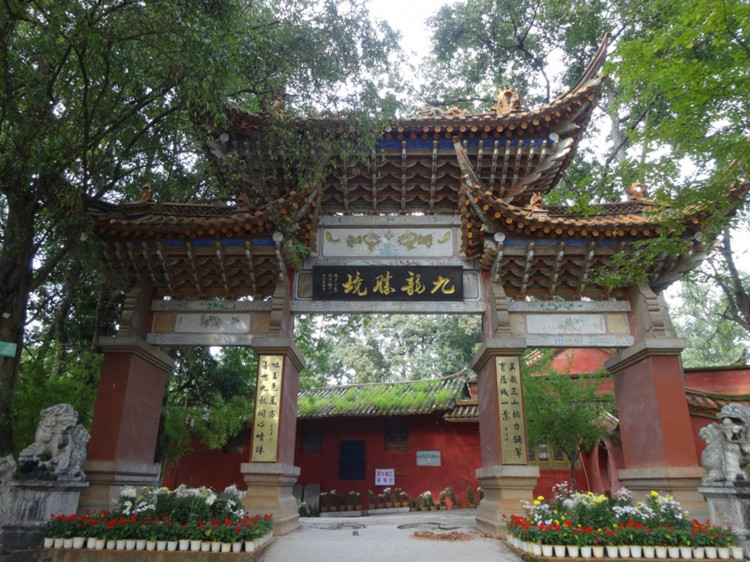
The Nine-dragon Pond is located at the foot of Qilishan Mountain in the northwest of Hongta District. It was built in the Ming Dynasty and some buildings which make it perfect were rebuilt in the Qing Dynasty. The pure clean springs and the graceful old trees form an organic whole. The Peals Spring, the Quiet Spring and the Malong Spring in the south of the scenic region supply people with adequate water. The Nine-dragon Palace, the Whispering-spring Building, the Grand Building, the Avalokites Hall, the Three-saint Hall, the Scholar Pavilion and the Wusi Temple were built through taking the geographical features into consideration.


The wonderful hills and winding roads will render visitors much scholarly thinking. It is a cultural relic under the protection of Yunnan Provincial Government and the Dictionary of Famous Chinese Scenic Spots has an entry about it.
Jiulongchi Park or Nine-dragon Pond is located under the foot of Qilu Mountain 10 kilometers away from central area of Hongta District. It was built in early Ming Dynasty and has experienced 600 years of construction and renovation to form today’s scale. The name of Jiulongchi is so called due to the nine continuously-flowing springs scattered in the park.
Scenes in the park consist of Jiulong Temple, Dalong Pond, Tingquan Pavilion, Daguan Pavilion, Guanyin Temple, Sansheng Temple, Wenxing Temple, Wusi Temple, and Feijing Lake. Jiulongchi ranked first among Yuxi Fourteen Scenes in ancient times. Now it has been appraised as a provincial key place of interest and 2A level park of national standard and has been listed in the Dictionary of Chinese Famous Attractions.
The park has unique arrangements with pine tress and cypresses in the front, mountains at the back, and river and lake at the lower layer. Water is the major feature of the park and architecture are nicely arranged around water bodies. Ancient and famous trees, uniquely formed peaks and stones, and beautiful mountainous and lake scenes, with integration of architectures, form a picturesque painting that demonstrates ancient Chinese idea of architecture that emphasizes the harmony between nature and human. The ancient architectures, carvings, tablet inscriptions, and trees reflect to certain extent the historical development in politics, economy, architecture, garden, carving, religion and culture, which is a typical sample of the integration between Yunnan local culture and culture from central China.
Admission Fee:¥0

You will only receive emails that you permitted upon submission and your email address will never be shared with any third parties without your express permission.
